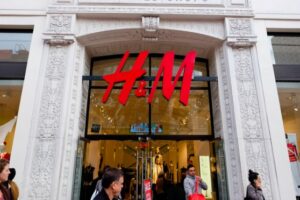As the global beauty market continues to flourish, generating an impressive $430 billion in revenue, Amazon emerges as a trailblazer in the premium beauty sector. With beauty dollar and unit sales growth eclipsing that of specialty and mass retailers, the online behemoth is poised to redefine the beauty industry landscape in 2024. Over the past decade, Amazon has meticulously constructed a stronghold within this arena, particularly with the introduction of premium marketplaces and indie beauty programs. The pandemic has only accelerated this trend, inciting a surge in premium brand participation and cementing Amazon’s reputation as a hub for convenience, value, and luxury beauty products.
Entering the competitive world of beauty products on Amazon poses a blend of opportunities and challenges for premium beauty brands. As the platform’s influence grows—an expected upsurge in health, beauty, and personal care sales to $79.4 billion by 2025—brands must adapt with strategic finesse. Amazon’s unique demographic of older, affluent, small household beauty shoppers presents a target audience ripe for tailored marketing strategies. Backed by data-driven insights, brands that capitalize on this audience utilizing Amazon’s ‘always-on’ advertising approach and restrictive measures against counterfeiting can attract success amidst a market that Amazon holds dominantly, boasting a share nearly three times that of specialists like Ulta Beauty. As Amazon continues to innovate with beauty technology advancements, premium beauty brands must navigate the ecosystem with tact, harnessing virtual try-ons, skin diagnostics, and a compelling user experience to thrive within this transformative marketplace.
Amazon’s Approach to Premium and Luxury Beauty
Amazon’s strategic segmentation of its beauty offerings caters to diverse consumer needs and positions the platform as a comprehensive beauty hub. By distinguishing their beauty products into three sub-groups, Amazon taps into varying market demands with refined precision:
- Amazon Luxury Beauty: This category is tailored for consumers seeking opulent beauty products from esteemed luxury brands, including but not limited to Elizabeth Arden and Anastasia Beverly Hills. It boasts an array of high-end cosmetics and skincare items that appeal to affluent shoppers looking for a premium experience.
- Amazon Professional Beauty: Aimed at providing quality beauty solutions for businesses, this division supplies salons, spas, and dermatologist offices with professional-grade products. It is systematically classified into two further categories: Professional Skin Care and Salon and Spa, ensuring that specific industry needs are adequately met.
- Amazon Indie Beauty: Recognizing the growing popularity of niche and independent brands, Amazon launched Indie Beauty in 2018. It features a selection of cosmetic and skincare brands that are often absent in mass retailers, thereby offering unique products to discerning consumers. To be eligible, these brands must maintain at least 50% independent ownership and avoidance of widespread retail distribution.
Amazon’s impact on the beauty market is profound, and it surpassed Walmart as the largest US beauty retailer by 2023. It serves as a pivotal platform for beauty product discovery, where shoppers can explore a broad spectrum of beauty categories.
To navigate the Amazon ecosystem and optimize for success, brands should incorporate the following strategies:
- Prioritize Product Visibility: Brands not part of Amazon’s exclusive beauty subcategories face the challenge of gaining exposure. Leveraging Amazon Advertising, especially Pay-Per-Click (PPC) campaigns, can significantly increase a product’s visibility and drive traffic.
- Tailored Advertising: With 45% of beauty purchases being semi-planned, brands can capitalize on this behavior through targeted advertising. Understanding that Amazon beauty shoppers prioritize hydration in skincare, for example, allows for more focused marketing strategies.
- Multi-Channel Approach: Given that 90% of Consumer Packaged Goods (CPGs) are still purchased in physical stores, it’s essential for advertisers to develop a proficient omni-channel retail approach. However, since online media influences 77% of retail decisions, utilizing Amazon Ads to reach cross-category shoppers becomes imperative.
Lastly, brands must consider the shift in consumer habits, noting that 89% of new online beauty shoppers during the pandemic intend to maintain their online shopping behavior. This indicates a significant opportunity for premium beauty brands on Amazon to engage with a more extensive, digitally-oriented customer base. Furthermore, they can leverage trends such as men’s grooming, predicted to boom, and connect with influential Gen Z shoppers through social media, thereby solidifying their presence within the premium beauty space on Amazon.
Challenges for Beauty Brands on Amazon
Venturing into Amazon’s beauty category presents a labyrinth of guidelines and regulations for premium beauty brands aiming to thrive in an increasingly crowded marketplace. Stringent measures, set to ensure customer safety due to products interacting directly with skin, stipulate that listed beauty products must be new, contain a full ingredient disclosure on the packaging, and only use claims approved by the FDA. To become an authorized seller, brands need to furnish thorough documentation including purchase orders, Certificates of Analysis (COAs), and Safety Data Sheets (SDS) from manufacturers. Moreover, an established sales history becomes crucial for kickstarting sales momentum on this massive e-commerce platform.
Premium beauty brands enter a highly competitive battleground on Amazon, where gaining visibility can be as challenging as creating the product itself. About 23% of Amazon sellers have listings in the beauty category, suggesting that unique selling propositions (USPs) such as innovative ingredients, eco-friendly packaging, or celebrity endorsements need to be prominently showcased within product listings. These differentiators help products capture attention amidst a sea of competitors. However, the climb to success is steep, as Amazon charges fees for various services, including shipping to fulfillment centers and listing or selling fees, which can slice into profit margins. Additionally, accessing Amazon’s Brand Registry—an essential tool for guarding intellectual property and unlocking A+ content—requires a trademark that demands investment and patience due to the potentially lengthy registration process.
In the face of Amazon’s bustling marketplace, resellers and unauthorized sellers add complexity and confusion. Premium beauty brands often struggle to discern how these sellers procure their products, leading to customer bewilderment over the product’s authenticity and undermining brand integrity. Retail arbitrage poses a further threat; individuals buying products from retail outlets to resell them on Amazon can erode consumer trust and inadvertently drive down prices. To combat these issues, prestige beauty brands align with specialized agencies that monitor channel pricing, employ digital rights management technologies, and implement sophisticated analytics reporting tools. Simultaneously, Amazon has pivoted towards fostering direct relationships with prestige beauty brands to mitigate counterfeiting concerns and bolster consumer confidence in its arbitrage-influenced business model.
Strategies for Success on Amazon
Success on Amazon within the beauty category hinges upon an astute understanding of the platform’s nuances and leveraging the tools at hand to navigate its intricate environment effectively. Premium beauty brands should focus on the following crucial aspects:
- Product Mix: To establish a strong foothold, brands must assess their portfolio’s breadth, considering profitability and catering to diverse needs. Quick product launches take center stage, reaping the benefits of immediate reviews and ratings, which are instrumental in building a product’s reputation.
- Market Acumen: Delving into detailed, assiduously gathered data informs pivotal aspects such as product page optimization, astute advertising tactics, and astutely attuned new product inception. In a domain where nuances can mean the difference between obscurity and spotlight, such intelligence becomes a brand’s compass.
- Catalog Optimization: Catalog curation is not merely about listing products but doing so with strategic finesse. Keyword research and optimization, listings that reflect customer feedback, and professional, high-quality images make a tangible difference in a brand’s perception and discoverability.
A robust Brand Store on Amazon serves as a linchpin for cross-promoting and retailing an entire portfolio. Successful brand stores resonate with customer intentions, ensuring content is organized and positive, integrates new offerings smoothly, and employs A/B testing for continual enhancement.
Executing adept Marketing & Advertising strategies is also essential, targeting the acquisition of new customers while providing seamless access for returning ones. Amazon’s unique targeting capabilities offer a fertile ground for tailored campaigns, and external traffic can further bolster organic ranking when driven strategically.
Stock availability remains a critical factor as per Amazon’s flywheel concept; therefore, ensuring continuous stock levels and collaborating with an Amazon Vendor Services (AVS) brand specialist to optimize stock management is vital. Moreover, the mix of products offered should reflect a balance between breadth and depth, allowing customers to find exactly what they seek.
Capitalizing on Amazon’s algorithm (A9) can amplify a brand’s online presence. High-quality images, relevant keywords in product titles, and diligently updated backend search terms influence product discoverability and ranking, intricately woven into Amazon’s A9 Algorithm.
Fostering a Cohesive Brand Presence demands consistency across all touchpoints, from the narrative within product descriptions to interactions with customers, all threaded by a brand’s unique voice and tone. Enriching listings with Enhanced Brand Content sets the scene for engaging storytelling and visually compelling descriptions.
As insights reveal, 92% of consumers scour reviews before making a purchase, underlining the weight of genuine, well-responded-to feedback. Brands are encouraged to proactively solicit feedback while engaging thoughtfully with reviewers, a practice that not only elevates the brand’s stature but also vitalizes conversion rates.
Product Bundling works wonders in offering perceived value, thus multiplying sales and pumping up the average order value. Meanwhile, Fulfillment by Amazon (FBA) enhances trust, ensuring consumers enjoy the convenience of Prime 2-Day Shipping alongside Amazon’s reputable customer service.
Staying abreast of Beauty Trends and Innovations and reflecting these in product assortments and listings ensures a brand stays competitive and relevant. Beauty brand survival and success on Amazon boil down to staying dynamic, engaging, and customer-centric, mirroring the very essence of the beauty market itself.
While leveraging Amazon Premium Beauty, Professional Beauty, and Indie Beauty may necessitate specific approvals, brands that refine their strategies across these five pillars—product mix, market understanding, catalog optimization, brand store, and marketing—can not only survive but truly thrive in Amazon’s thriving beauty landscape.
Navigating Amazon’s Ecosystem: A Brand Perspective
Navigating Amazon’s intricate ecosystem for a premium beauty brand requires a comprehensive understanding of its many layers, from the ever-evolving rules and algorithms to the particular features and functionalities that Amazon offers. Brands looking to enter or enhance their presence in Amazon’s marketplace must tackle a multifaceted terrain, driven by data and shaped by consumer behavior. Collaborating with Amazon management agencies can prove invaluable for businesses, offering expertise in optimizing product listings, adapting to algorithm shifts, creating focused advertising campaigns, and managing customer engagement. By honing these elements, brands unlock the potential that lies within Amazon’s competitive yet lucrative landscape.
The return on investment for brands using Amazon Advertising is significant; a study shows brands experienced at least a 4x return from such efforts. With more than half of the brands recognizing online marketplaces, particularly Amazon, as a source of immense opportunity, it’s evident that a strategic approach can lead to successful outcomes. When it comes to advertising, brands are increasingly diversifying their strategies on Amazon, leveraging a mix of Sponsored Products, Sponsored Brands, Sponsored Display, and Amazon DSP to achieve their goals—acquiring new customers, driving brand awareness, and generating sales. It is noteworthy that Sponsored Products have been particularly impactful, driving the highest Return on Ad Spend (RoAS) according to 55% of brands, with nearly half reporting a staggering 7x return or more.
In the context of diversification, while Amazon reigns as a major player in the e-commerce field, brands still value their own websites and physical stores, with a significant portion of sales stemming from these channels. Retailers are also expanding their online presence beyond Amazon, with 70% advertising on Walmart.com and a majority splitting their ad spend between the two giants. In mastering Amazon’s ecosystem, retailers must not only focus internally but also observe the external retail landscape, frequently revisiting their ecosystem strategy to stay competitive in a dynamic marketplace. Through a combination of precise listing optimization, positive review cultivation, dynamic pricing models, and effective use of Amazon Advertising tools, brands can strategically position themselves for growth and success in the world of online retail.
Insights
Amazon is solidifying its position as a dominant force in the U.S. beauty retail market, a trend underscored by the premium skincare segment. With $13.5 billion in retail sales within the online beauty category in 2021 and expectations set for this figure to double in five years, premium skincare brands are turning their focus toward Amazon to capitalize on this substantial growth. Acknowledging the significance of this platform, where one in three premium skincare customers begin their shopping journey, brands are leveraging Amazon’s robust recommendation and rating system, which influences 38% of these consumers in their product discovery.
Understanding the skincare needs and behaviors of Amazon shoppers is pivotal for brands aiming for prominence in this competitive space. A snapshot of their priorities reveals:
- Skincare Needs:
- Hydration is the primary need for Amazon beauty shoppers, emphasizing the importance of products that offer moisturizing benefits.
- Anti-aging, acne and blemish solutions, along with products that brighten skin, are among other top concerns that shoppers look to address.
- Decision Factors:
- Shoppers weigh brand names, ratings, and recommendations heavily in their decision-making process, with 37% utilizing Amazon to compare these attributes across brands.
- Innovations and trending ingredients, such as those seen with searches for berberine, gel nail polish, and retinol body lotion, are met with heightened interest and sales spikes, particularly observable during events like Prime Day where beauty sales saw a 108% average increase.
Premium beauty brands strategizing for success on Amazon should consider:
- Digital Marketing Strategies: Utilizing tools such as Sponsored Display, Sponsored Brands, and Sponsored Products to cater to discerning shoppers and ensure products are easily discoverable and aligned with their needs.
- Omnichannel Engagement: By expanding reach through related categories and adopting an omnichannel approach, brands can engage audiences more effectively throughout the various stages of their customer journeys.
The rapid ascent of Amazon in the beauty category has been nothing short of impressive, with the marketplace’s beauty client sales surging by 71% year-over-year in July 2023, and an expected growth in retail sales of health and beauty products at a CAGR of 12.1% from 2022 to 2027. The platform’s attractiveness is attributed to affordable pricing, convenience of shopping at any hour, and a vast assortment of beauty products, which is bolstered by Amazon’s expansion into the luxury market. Amazon maintains its allure by partnering with renowned beauty brands like Dr. Barbara Sturm and offering an unprecedented selection of items from both 1P and 3P vendors, where 3P sales surpass those of 1P.
These dynamics are reflected in demographic data, with Amazon’s average female beauty shopper being 48 years old with a household income of nearly $86,000—indicative of the platform’s wide appeal to a clientele with the propensity to spend on premium beauty products. Furthermore, Amazon’s international appeal is notable, with amazon.co.uk leading by share of voice in the UK and 48% of shoppers considering Amazon for their skincare and makeup purchases. As brands anticipate continued growth and evolution within Amazon’s marketplace, those that align their offerings and marketing strategies with shopper insights and trends stand poised for success in tapping into this vast and lucrative customer base.



















